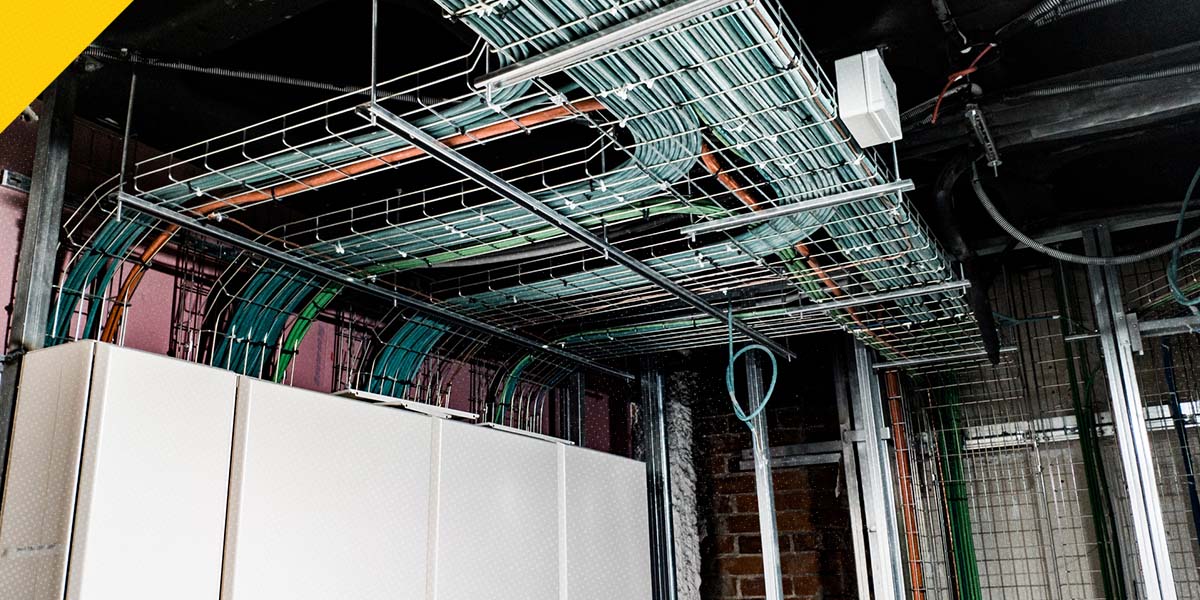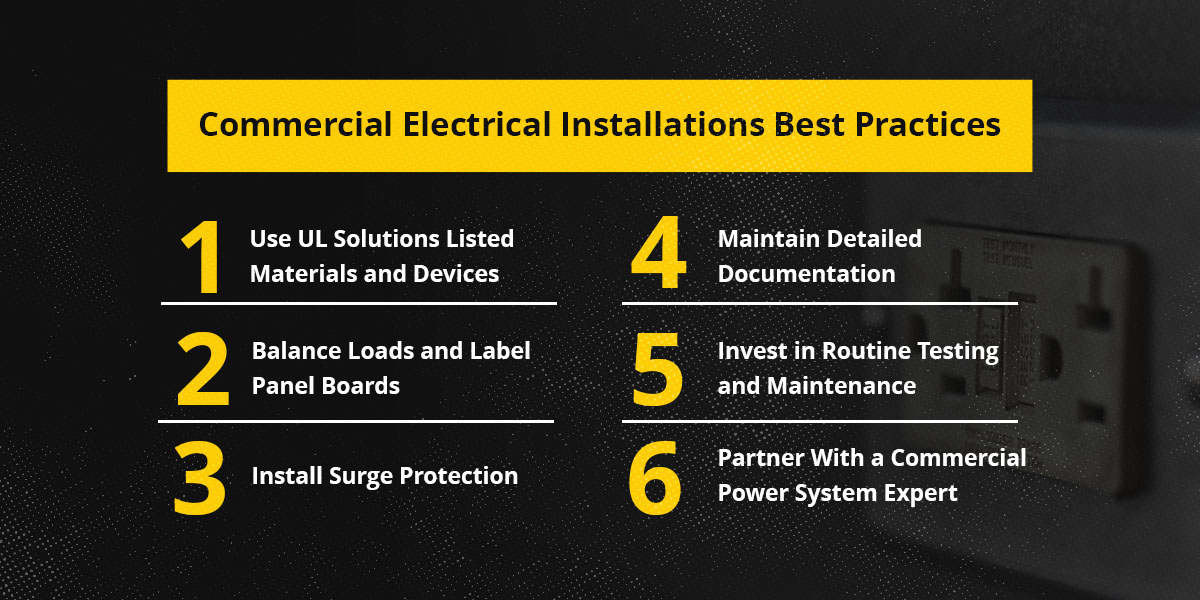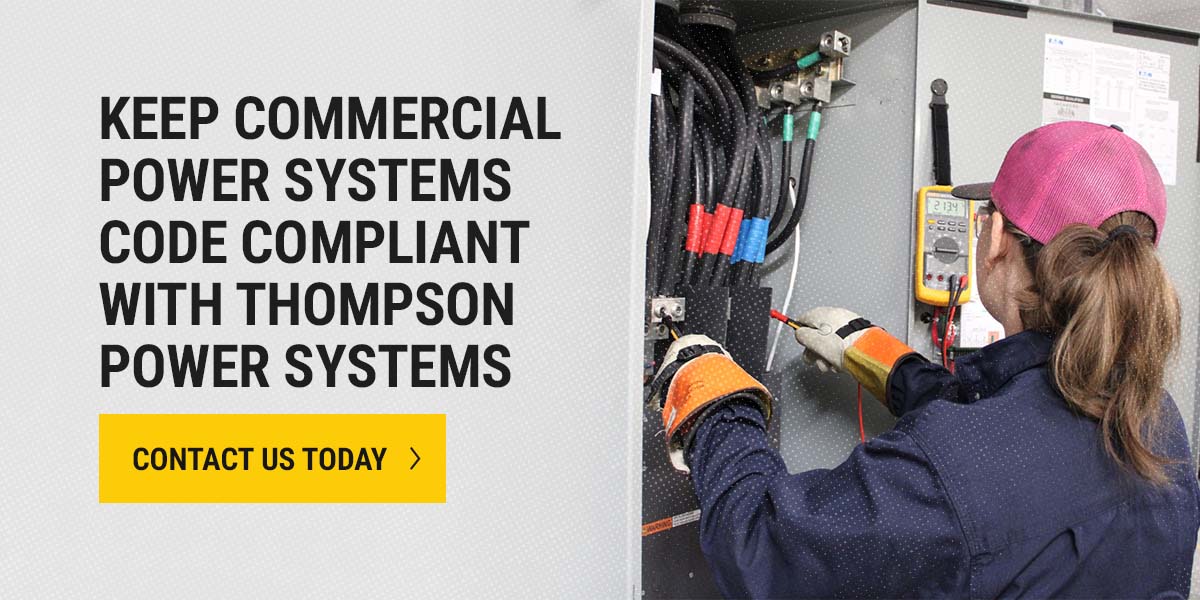

Staying compliant with commercial electrical codes keeps people safe, systems running, and businesses protected. However, with codes changing every few years, it may feel like compliance is moving out of reach. You need to know what the regulations are and how to apply them without disrupting project timelines or operations.
Explore electrical code compliance requirements and best practices to ensure power system reliability.
A ground fault circuit interrupter (GFCI) prevents electric shock. It monitors the flow of electricity and cuts off power within milliseconds when it detects an imbalance. This fast action helps prevent injuries or fatalities from electric shock.
The National Electric Code (NEC) requires GFCI protection across various commercial installations. The code specifies that 125-volt to 250-volt, single-phase, 50-ampere and less receptacles installed in commercial and industrial settings must have GFCI protection when placed in specific locations.
Additionally, 150 or fewer to ground, three-phase, 100 amperes or less must be GFCI-protected. These protections must include outdoor outlets rated up to 250V and receptacles within 6 feet of sinks, tubs, or similar water sources.
Common commercial GFCI locations include:
Local codes may expand these zones further. For example, hospitality or health care facilities may require GFCIs near patient care areas or janitorial sinks.
Proper electrical outlet placement in commercial buildings ensures spaces are functional, safe, and can support operations without overloading circuits or relying on unsafe workarounds. Proper outlet planning reduces fire risk, supports equipment reliability, and improves user convenience.
Outlet requirements vary depending on the type of space, its use, and the electrical load. However, some common standards include:
Low-voltage systems — typically defined as 50 volts or less — might not carry the same shock risk as high-voltage systems, but they’re still subject to code requirements to ensure performance, safety, and reliability.
Low-voltage wiring covers the following systems:
Here’s how cabling should be installed, protected, separated, and labeled, depending on the system type:
Commercial electrical systems are only as reliable as the practices used to design, install, and maintain them. Here are six techniques to ensure performance, safety, and efficiency.

Start with products that meet UL Solutions requirements. These products have undergone testing and are certified they be manufactured in compliance with safety requirements.
Using certified parts also ensures performance consistency and a smoother inspection process. Products without a recognized listing can trigger regulatory issues or lead to early system failure. Use only listed breakers, receptacles, conduit, and cabling, and verify product certifications.
Unbalanced electrical panels can lead to:
Balancing loads optimizes system efficiency and prolongs equipment life. Clearly labeling panelboards makes maintenance, expansion, or troubleshooting faster and safer.
Voltage spikes can damage sensitive equipment or shorten its lifespan, especially in settings with fluctuating loads or risk factors like lightning or grid switching. Best practices include:
Well-documented electrical systems are easier to troubleshoot, expand, and inspect. Maintain clear records that include:
Routine testing ensures ongoing protection of your systems. Building teams should document testing cycles and ensure replacements are installed when devices fail or age.
Some commercial facilities can benefit from integrated monitoring systems that detect fault conditions or failed devices. For example, load bank testing or remote asset monitoring solutions offer visibility into system health and help teams maintain compliance without relying on manual checks.
A power system company brings specialized expertise and understands commercial code requirements. They know how to design systems that pass inspection and support daily operations. They can also help future-proof your space to simplify the addition of new technologies or accommodate expansions.
Certified partners can deal with complex installations, including:

At Thompson Power Systems, we help commercial building owners meet code requirements and maintain reliability. We sell and install backup power systems built around your electrical load, compliance standards, and safety protocols. From generators to automatic transfer switches and integrated energy storage, our solutions support power needs and regulatory obligations.
With over 65 years of experience, our local teams provide hands-on support, responsive service, and extended coverage to keep operations on track. Contact us today to learn how we can help improve system performance while staying compliant with evolving standards.